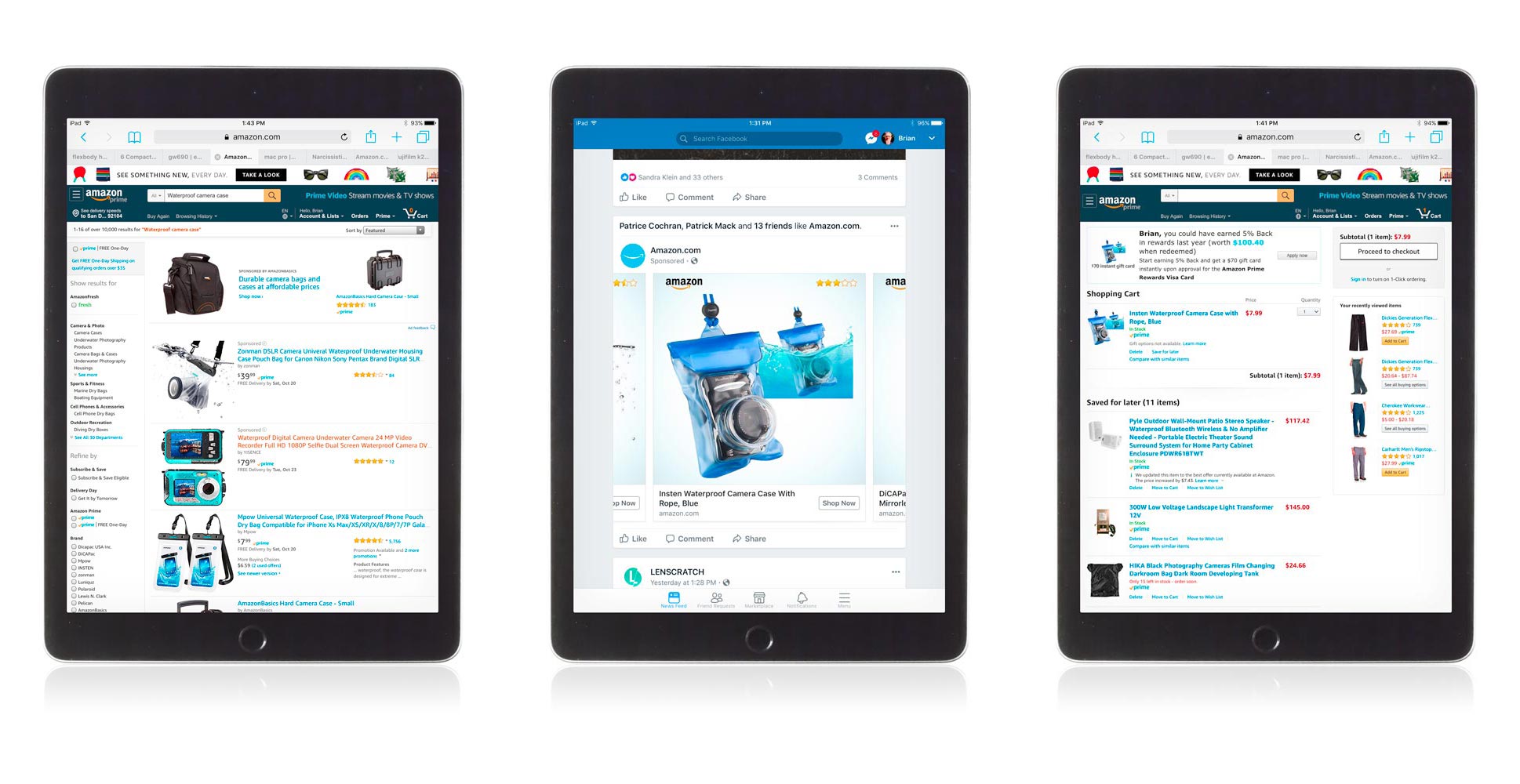The future of marketing is in the hands of programmatic advertising platforms, helping small to large businesses grow their audiences and increase revenues. Understanding programmatic advertising and which platform is best for your business is important to maximize your business’s potential.
In 2017, a Dun & Bradstreet Report study found 65 percent of B2B marketers bought or sold advertising programmatically and 70 percent planned to increase spending on programmatic advertising that year. This was a substantial increase in use from 2016, which saw 54 percent of B2B marketers using programmatic campaigns, and the trend shows no signs of slowing down. As programmatic advertising platforms grow in popularity, it is more important than ever to understand how it works and which platform is best for your business.
Programmatic advertising is a form of marketing automation that uses consumer data and insights taken from their online habits to create personalized advertising experiences in real-time, using artificial intelligence (AI). Once the data has been collected from customers, the programmatic advertising program applies the data to a real-time bidding (RTB) algorithm, using money committed to the advertising campaign to start bidding for advertising space on their customers’ most visited sites.
Amazon’s Advertising Platform is a demand side platform (DSP) that leverages first-party insights to target users’ online behavior via social media and visited web pages and places ads on those pages. For example, if you’ve ever looked at a new pair of shoes on Amazon and suddenly saw the same pair of shoes appear on your Facebook or Instagram timeline, programmatic advertising is the reason.
Choosing Between Programmatic Advertising Platforms
Utilizing programmatic ads in your digital marketing campaigns is important to make sure your business continues to grow, but knowing which programmatic advertising platforms to use will ensure the most appropriate growth of your company. AudienceX in partnership with Sizmek, Simpli.fi, and Centro are three main programmatic advertising platforms in use for medium-sized businesses. Each focuses on a different audience to maximize their clients’ growth potential with proven track records to back them up. Here’s how each platform stacks up:
AudienceX Case Study Using Sizmek Technology
AudienceX recently announced an exclusive partnership with Sizmek to reach mid-sized advertisers with Sizmek’s superior programmatic advertising technologies using AI-driven decisioning. AudienceX’s proven track record of omnichannel marketing services grew after gaining access to Sizmek’s DSP and their entire stack of data, including self-serve, native, display, and video. Currently, AudienceX has the largest AI program of the three platforms on a big data scale with access to over 11.3 million touch points of data including: age, income, sites visited, purchases/purchase intent, device, and time spent.
One AudienceX client, The Olson Company – a recognized leader in providing affordable urban housing throughout California – sought to increase awareness and drive site traffic to their Union Walk, Ventana Walk, and Fig & Fifty Walk modern home communities. To accomplish this task, AudienceX prospected users based on demographic, lifestyle, and contextual indicators, in addition to implementing specific zip code targeting and delivering display ads to users’ desktops, mobile, and tablet devices. The campaign drove significant traffic to Olson’s sites, with above average industry benchmark click-through-rates (CTRs) — approximately 1.11 percent, increasing substantially through the span of the ad buy.
AudienceX has also achieved great success with their realty-based clients. One client, an online housing search platform, retained AudienceX to increase qualified leads of rental applicants at a $100 cost-per-action (CPA) goal and leverage cross-device optimization to drive conversions within and across devices. Over the two-month campaign, AudienceX was able to beat their CPA goal by 70 percent and increase conversions to 5,800. The advertiser received a total value of $580,000 by switching to people-based cross-device attribution. They also saw a 25 percent and 85 percent lift in desktop and mobile conversions, respectively.
Simpli.fi – Case Study
A leader in hyper local programmatic advertising, Simpli.fi works with the largest buyers of localized advertising, such as multiplication brands, agencies, and local media groups. These companies use Simpli.fi to narrow their ad targeting in order to deliver high performance volumes on localized campaigns and receive detailed insights on their audiences.
During a local Circuit Court Judge election, one candidate sought to boost CTRs to the campaign website, promote her platform, drive constituents to polling locations, and track online-to-offline conversions. To accomplish these goals, the candidate’s staff provided Simpli.fi with a list of 35,000 addresses to target. Simpli.fi automatically matched these addresses to the exact physical location, shape, and size of the address. This created a geo-fence zone around each location to capture the number of individuals at that address. On Election Day, Simpli.fi tracked conversion zones around 45 polling locations to trace the number of users who received an ad, then visited a polling location. After the weeklong campaign, Simpli.fi drove a high 0.15 percent CTR with 288 geo-fence conversions on the day of the election, bringing their candidate a close victory decided by 150 votes!
Centro – Case Study
Centro is a technology consulting, media activation, insights and attribution digital marketing company that specializes in helping companies determine their business goals and the best ways to achieve them. As the largest independent digital media investment company in North America, their company employs a proprietary strategic intelligence and comprehensive programmatic platform to improve performance of digital ads.
An international thrift store chain came to Centro to help build brand awareness, increase foot traffic, solicit donations, and drive traffic to their website. The company also sought to convert website visitors to new customers via a “Find Your Store” button. They leveraged Centro’s programmatic advertising with advanced targeting capabilities and access to 30 billion display impressions to reach the target audience at scale. First- and third-party data-driven tactics, relevant contextual alignment, and retargeting across display and mobile channels were also part of the campaign. Outcomes exceeded expectations, resulting in 60 percent of the site’s total conversions, a 38 percent increase in search traffic, 67 percent increase in site traffic, and $200,000 in incremental revenue.
Programmatic Advertising 101
Still have questions about programmatic advertising? Here are some fundamental terms and frequently asked questions to help you sound like a programmatic advertising expert.
Words/Phrases to Know
Demand-Side Platforms (DSPs) facilitate open market ad purchases.
Supply-Side Platforms (SSPs) manage ad inventory for publishers.
Data Management Platforms (DMPs) collect and analyze user data to help with targeting and messaging.
Dynamic Creative Optimization (DCO) refers to display ad technology that helps automate multivariate, or A/B, testing.
Real-time bidding (RTB) is how inventory is bought and sold through auctions.
Questions
How does programmatic advertising work?
Users are targeted through data integrated with a DSP. The programmatic team then activates the data and applies it when buying advertising inventory in real-time. RTB is how the inventory is bought and sold through auctions (see the image above).
Where does ad inventory come from?
Everywhere! Almost all sites have inventory available via the open exchange. You can also set up programmatic direct deals with publishers. Compared to non-programmatic deals, this approach enables your campaign to go live faster, takes fewer steps, and has less touchpoints along the way. Direct deals aren’t limited to banner ads on websites or social media; emails, native advertising, audio spots, and TV/video spots can also be bought programmatically.
What about brand integrity?
Pre-bid filters prohibit spending on sites that contain questionable or potentially brand damaging content. The purchasing process is also protected with previously scrubbed data sets and a continually updated blocked site list. After a purchase, the programmatic team manually pulls site lists to filter out anything that may have slipped past the first two checks.





